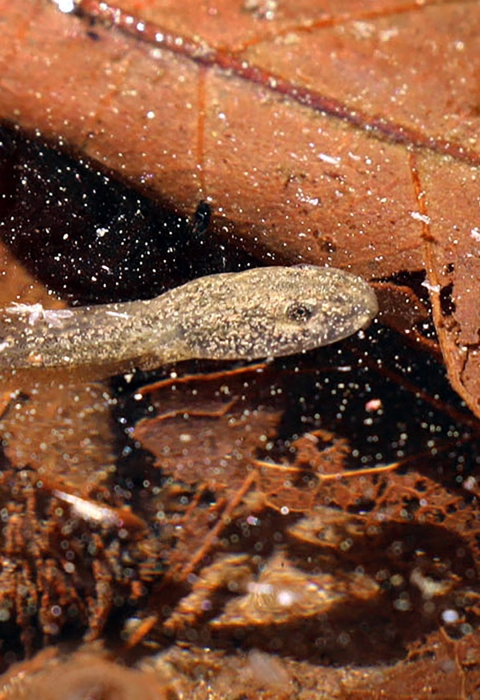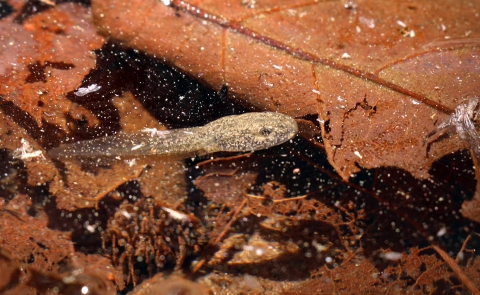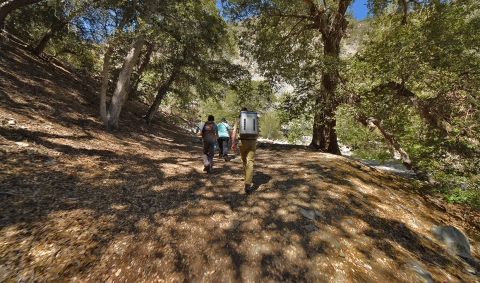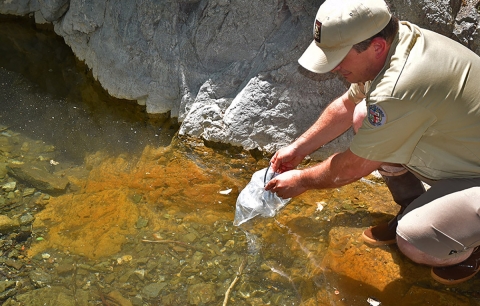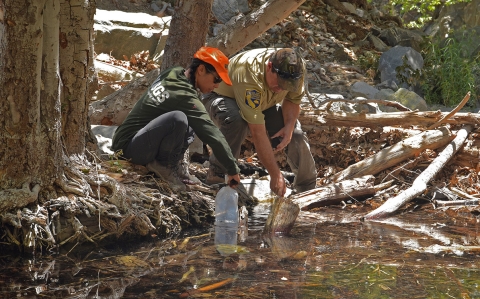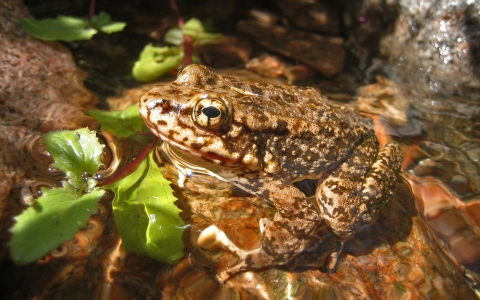At a campground on the San Gabriel Mountains National Monument inside the Angeles National Forest, scientists gathered on a warm summer morning in June. In a cooler, 500 endangered tadpoles dart back and forth inside several zip tied plastic bags, unaware they would be pioneers in an effort to re-establish a population of their species in the wild.
“There are more tadpoles in this cooler than there are on this entire mountain,” said Ian Recchio, curator of Amphibians, Reptiles and Fish for the Los Angeles Zoo and Botanic Gardens.
The bags of tadpoles were then carefully transferred into two insulated cooler backpacks for transport into the forest. This reintroduction would mark another milestone in efforts to recover the species.
The Southern California population of mountain yellow-legged frogs teetered on the brink of extinction in 2002, with fewer than 100 adults left in the wild. Recovery of this species involves innovative research, combined with down and dirty hands-on work to improve habitat conditions for the species.
The U.S. Fish and Wildlife Service issued permits to initiate captive breeding of the species in 2006. The Los Angeles Zoo, San Diego Zoo Global, and Omaha’s Henry Doorly Zoo and Aquarium are supporting these recovery efforts.
Recchio is proud of the Los Angeles Zoo’s success in captive breeding, with 2,300 tadpoles produced this year for reintroduction. “We’ve gotten really good at replicating the conditions needed to induce breeding,” he said.
The frogs hibernate in the winter. At the Los Angeles Zoo that means turning down the thermostat in the frog facility to about 40 degrees Fahrenheit, and keeping them in darkness for about two months.
Science and nature are at work in the captive breeding effort. Although strict scientific protocols are applied to mimic natural processes, sometimes the frogs determine when it’s time to change the season.
“Occasionally the frogs will tell us it’s time to bring them out of hibernation,” said Recchio. “We hear them start calling and know they are ready for breeding season.”
On the way to the release site, the scientists pass a concrete fish barrier erected to keep hungry non-native trout out of the frog’s habitat. Built using a recovery grant from the U.S. Fish and Wildlife Service, the barrier is one of several actions taken to help restore wild populations of mountain yellow-legged frogs.
After hiking more than a half mile, they reach a cold, partially shaded pool of water. Adam Backlin, an ecologist with the U.S. Geological Survey, found an adult frog at this location, and additional frogs further up the tributary in 2008, making it a good option for reintroduction.
Placed into the water and given several minutes to acclimate, the zip ties were cut and the tadpoles wriggled to freedom.
“Unlike most other frogs that reach maturity in one year, it will take at least two years before we can determine if they are successful at this site,” said Backlin.
At two sites on the San Bernardino National Forest, reintroduced frogs were documented breeding, giving hope these tadpoles will restore the call of the frog to yet another mountain within the species’ historic range.
